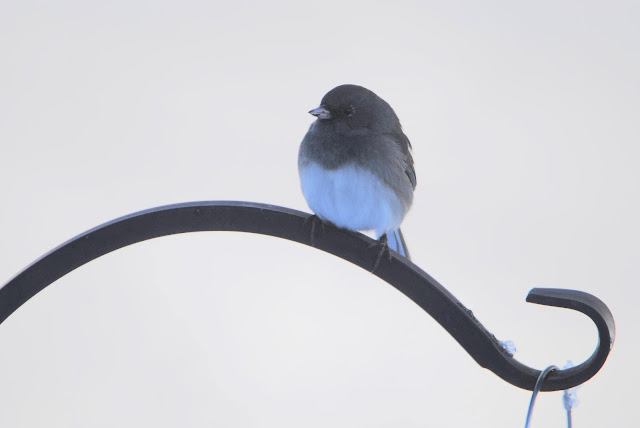My granddaughters are becoming bird watchers like me!
Even helping me feed the birds.
The kids know me well. For Christmas they purchased this watercolor bird desk calendar for me.
And a bird watercoloring book.
As I looked at this chickadee, I wondered, "how do these little birdies stay alive in these temperatures we are having?" We have been having below 0 temperatures with wind chill -30.
I looked it up on-line and found a few things:
"The chickadee stays warm all day by exercising and shivering, but when night falls, it must find shelter. Small, enclosed areas like tree cavities are best, but sometimes, any spot that blocks the wind will have to do."
"The primary way small birds reduce heat loss is through insulation. Feathers provide excellent insulation, and when it's cold, birds can fluff up their feathers to reduce heat loss further. Some birds even add extra feathers in winter."
You can see how fluffed up the gold finch is.
They "seek out shelter in dense foliage or cavities to avoid the elements. They also huddle, bunching together to share warmth, and try to minimize their total surface area by tucking in their head and feet and sticking up their feathers."
One Ross's goose among the Canada geese.
And how can the geese stand being in such freezing water? This was last week. This week the pond is frozen over.
"The feet keep the entire goose's body warm while in the water or tucked up into its feathers. To stay warm, geese will tuck their feet under the down while lying on a frozen pond or snow."
On the photo I took below, they have just landed and aren't resting on the frozen pond. Maybe they are confused, especially if this is their first year.
"Why is this water hard?! I want to swim!"
I love the coloring of the female cardinal.
The flash of bright red of the male cardinal is beautiful and stands out...
...especially on a snowy day.
Male house finch.
The female house finch enjoys a sunflower seed.
Junco - the winter bird
I provide food in several feeders around the house.
Male and female downy woodpecker are enjoying it. I make my own suet.
Here's the recipe I use usually:
1 cup shortening
1 cup crunchy peanut butter
Melt in pan. Do not boil.
Stir in:
2 cups oatmeal
1 cup cornmeal
2 cups birdseed
Pack tight into pan that has been sprayed with cooking spray. Precut with knife into blocks approximately the size of your feeder. Put in freezer and when frozen, remove blocks and wrap in foil. I keep mine in the freezer and simply unwrap and slip it in feeder as needed.
If starlings are sabbotaging it, I don't fill for a couple of days until they leave. Starlings will demolish it in a few minutes! The other birds I have aren't such gluttons.
I love the call of the blue jays.
Yes, there are seagulls in Kansas. Three species in Kansas are the Ring-billed Gull, Franklin's Gull and the Herring Gull.
When hawks appear, the birds all of a sudden disappear!
I am so blessed to have trees around our property so that birding is an everyday occurance! A fun hobby!
"I know every bird of the sky; and the beauty of the field is Mine."
Psalm 50:11
What an incredible thought. Every bird. Jesus tells His followers not to be anxious but to rely on God, as the birds, who are worth far less than people, are fully provided for by Him. (Matthew 6:25-27)

































No comments:
Post a Comment